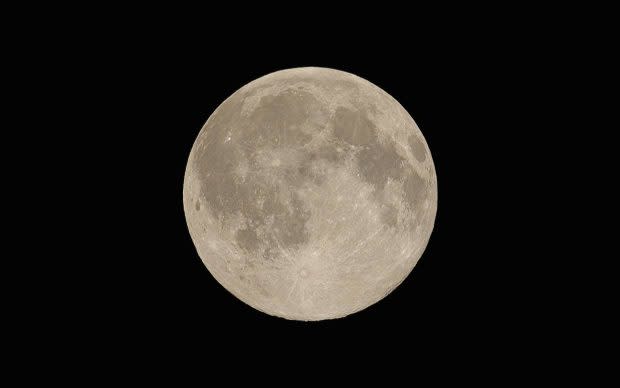Get Ready for the First Supermoon of 2023—Here's When To Look Up in July

iStock
"When the moon hits your eye like a big pizza pie, that's amore," go the lyrics from the iconic Dean Martin song.
And on July 3, 2023, in the afternoon, expect a lot of amore from the moon. The next July full moon will make its appearance on Monday, July 3, 2023, at 7:39 a.m. EDT and will shine throughout the day into the night.
And it’s not a typical full moon either.
Scientists refer to this full moon as a “supermoon,” or dramatic full moon that reaches its closest point to the earth for the month. And the result is a magnified, magical and, well, super moon. As stated before, this supermoon is only the first of 2023. It'll be followed by three more: two in August and the last one in September. To talk about the phenomenon that is the supermoon, Bea Gallardo-Lacourt, a researcher at NASA/Goddard Space Flight Center, has shared some tidbits with Parade as well.
Keep reading for the lowdown on supermoons!
Related: When Is The Next Full Moon in 2023?
What is a supermoon?
A supermoon occurs when the full moon is at its closest point to earth. Since it is a bit closer than usual, it appears particularly large and bright in the sky.
Related: Heads Up—Here’s What June’s New Moon in Gemini Means for Your Zodiac Sign
What causes a supermoon?
According to NASA, the moon orbits around the earth in an elongated circle. Every month, the moon passes through the spot closest to earth (perigee) and through the spot farthest from earth (apogee). When the moon is at or near its closest point to earth at the same time as it is full, it is a “supermoon.”
“During every 27-day orbit around the Earth, the moon reaches both perigee (~226k miles) and apogee (~251k miles),” says Gallardo-Lacourt. “Although supermoon is not an official astronomical term, it’s typically used to describe a full moon that comes within at least 90% of perigee. In this phase, the moon appears larger and brighter than usual.”
Related: Why Do We Always See the Same Side of the Moon?
What is the July full moon?
The July full moon is often called the Buck Moon. A lot of times, the full moon's special, monthly names have to do with what point the harvest is at, and July is about the time when crops are ripening and just about ready to harvest. But why is July called a Buck Moon? Well, male deer start to grow their antlers in late spring and in "full velvet" by July, according to the Farmer's Almanac.
Other names for the July full moon include Salmon Moon, from Native Americans in Alaska, and Mead Moon, from Celtic culture. There's also Hay Moon (from farmers) and Ripe Corn Moon (Cherokee Nation).
When is the next supermoon?
AccuWeather meteorologist Brian Lada explains that supermoons come in groupings, typically three in a row. This year, there is the supermoon in July (July 3), two in August (Aug. 1 and Aug. 30), and one on Sept. 29, 2023.
Related: 3, 2, 1, Blast Off! How Long Does It Actually Take To Get to the Moon?
How can you watch the supermoon?
For exact moonrise and moonset times near you go to timeanddate.com. Just put your location in the search bar and you've got a great schedule of when to view it where you're at.
Related: 5 of the Craziest Moon Landing Conspiracies and Why People Believed Them
When will the supermoon be at its biggest?
Typically, if there are three consecutive supermoons, the supermoon in the middle is the biggest and brightest of the bunch. In 2023, the biggest full moon of the year will be August's Blue Moon—the second full moon to occur in a month—on Aug. 30, 2023, according to Forbes. But don't worry; the July supermoon will still appear massive. “That difference is so small that you’d only be able to notice it if you took a picture of each full moon and put them side-by-side,” shares Lada.
With that said, go off and stargaze while also gazing at one of the biggest full moons of the year.
Next up, check out these 20 full moon rituals you can adopt to really harness the full power of the supermoon.
